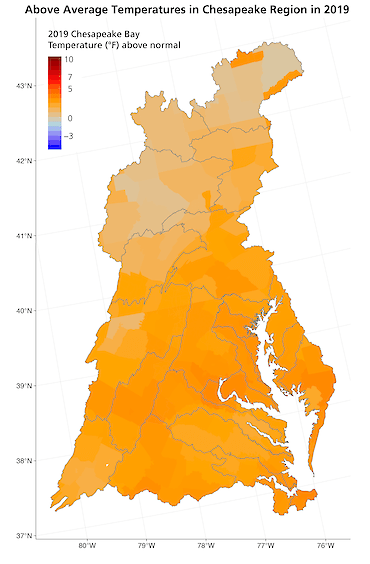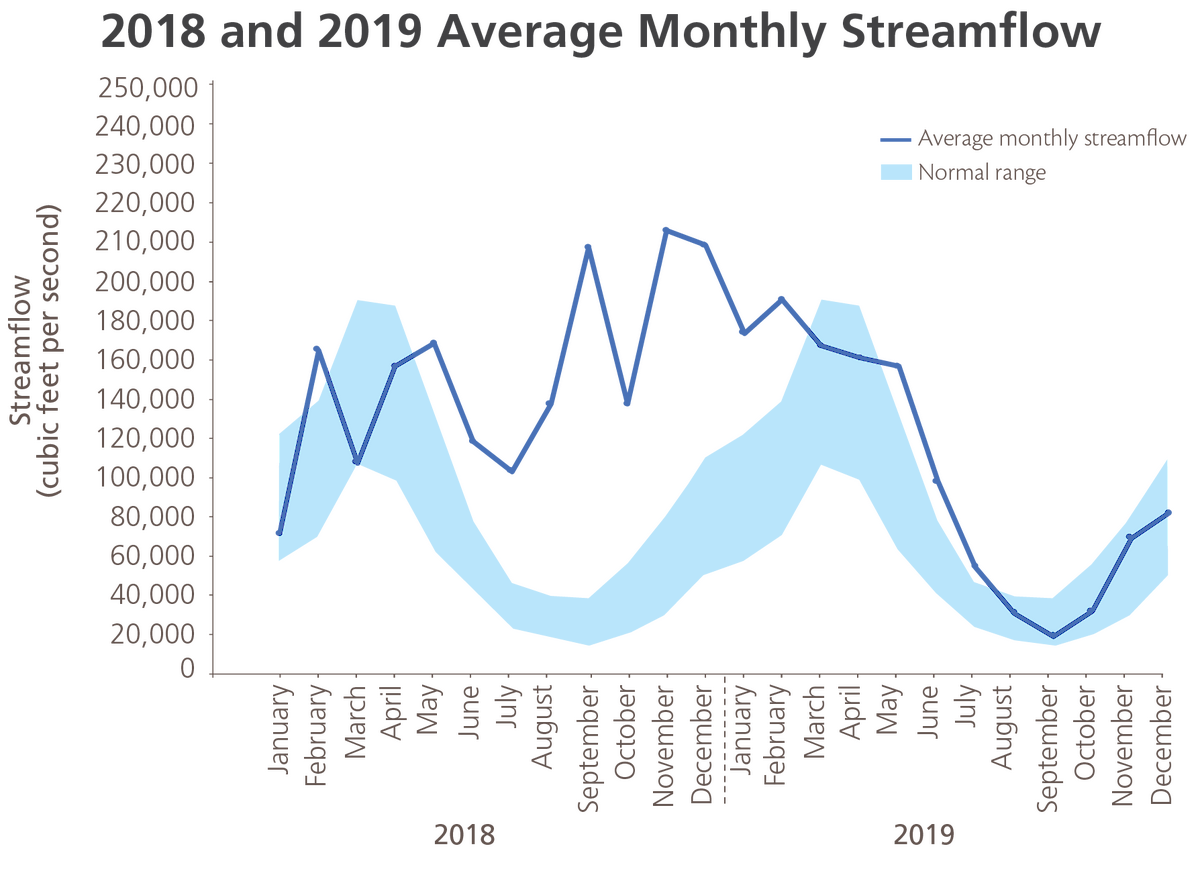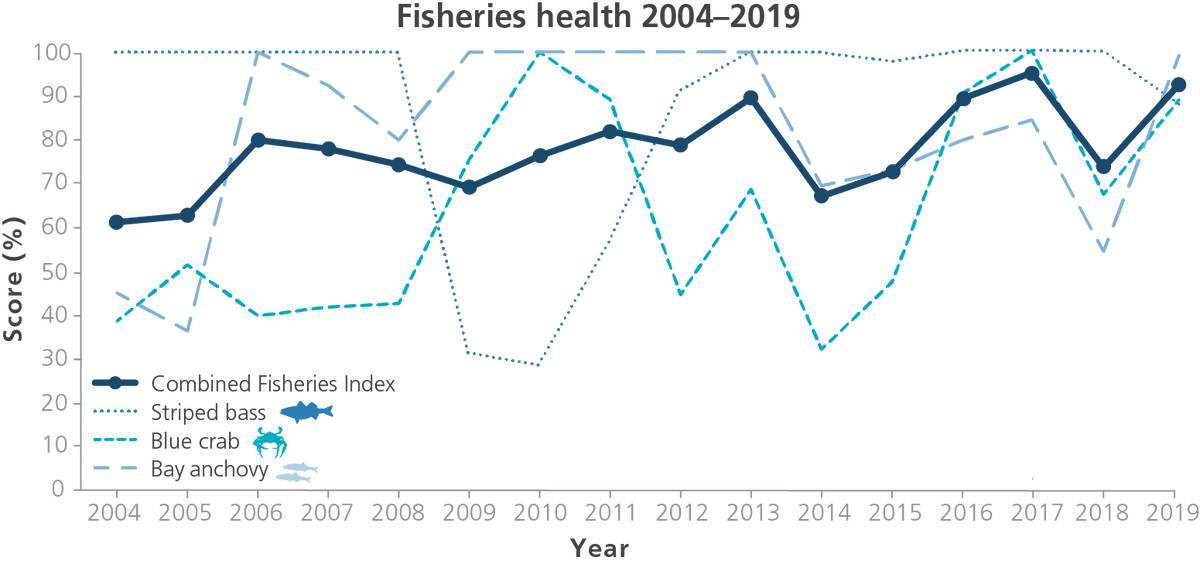Bay health stressed due to elevated temperatures
Moderate and poor scores in 2019 were mainly due to above-average temperatures almost every month of the year. Warmer air temperatures means warmer waters, and the intense heat hurt aquatic grasses and benthic macroinvertebrates, and caused lower dissolved oxygen levels.

Annual precipitation was not above normal in 2019 for the region as a whole, but extreme and severe periods of rain caused pollution from run-off. Coupled with high temperatures, these high-stormwater flow events cause added stress on aquatic habitats. There were also possibly lingering effects from the record rainfall in 2018 that stressed the bay and watershed. Streamflow in 2018 and the beginning of 2019 was high.

The long-term trajectory of bay health is still slightly improving even with the impacts of temperature and precipitation on the Bay in 2018 and 2019. Restoration efforts are needed to continue to reduce nutrient and sediment pollution in Chesapeake Bay and throughout the watershed, especially in light climate change impacts.
Fish populations improve in 2019
In 2019, the Fisheries Index scored 92%.
Both blue crab and bay anchovy scores improved. In 2019, blue crab scored 89% and bay anchovy scored 100%.
Striped bass data were not available in 2019 due to a survey redesign. Since the striped bass score is based on a three-year average, data from 2017-2018 was used in the scoring. The score decreased to an 88%.
The improvements in scores are encouraging, and show that fish populations are able to bounce back from low population years.

